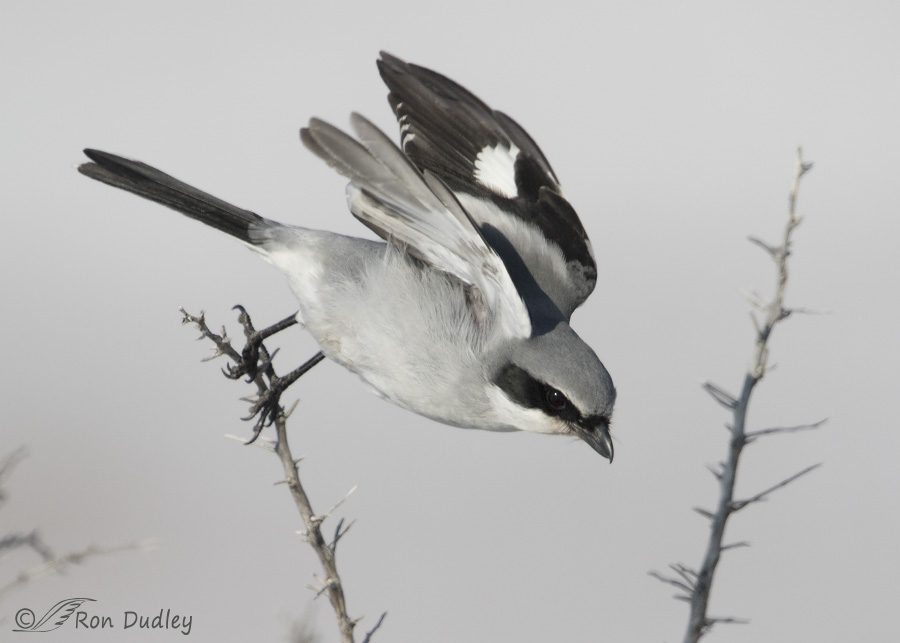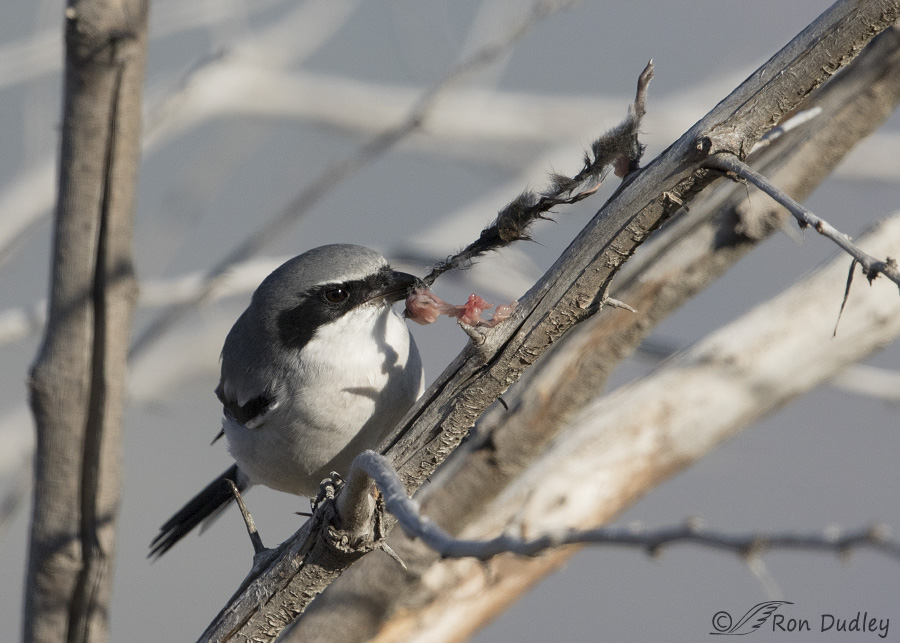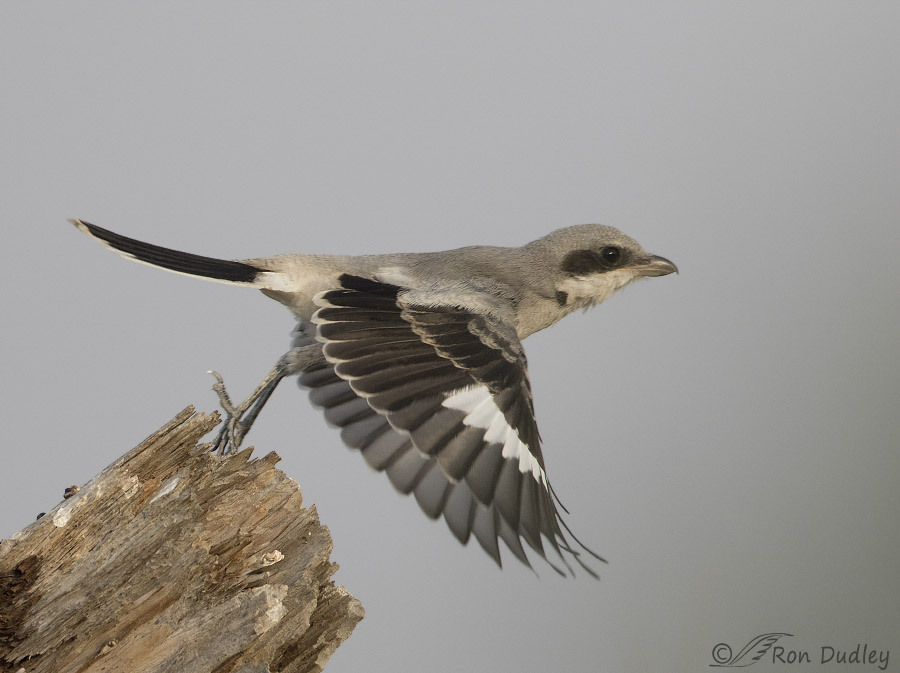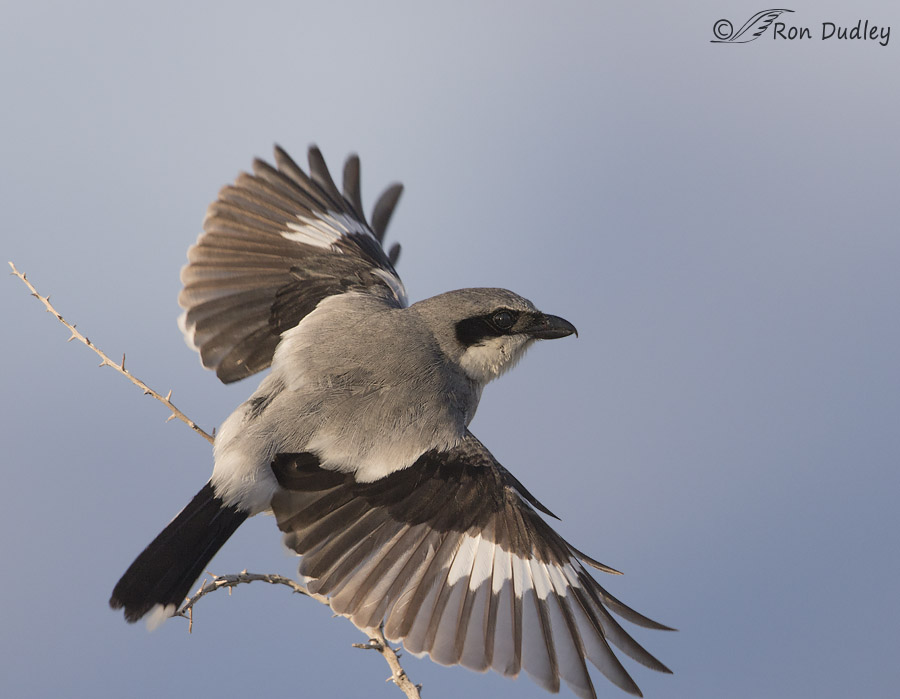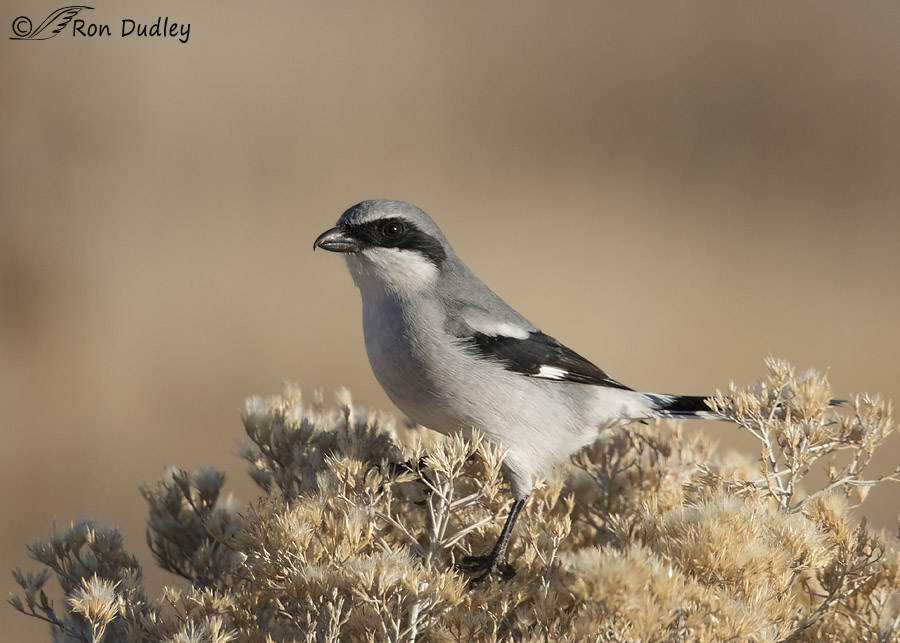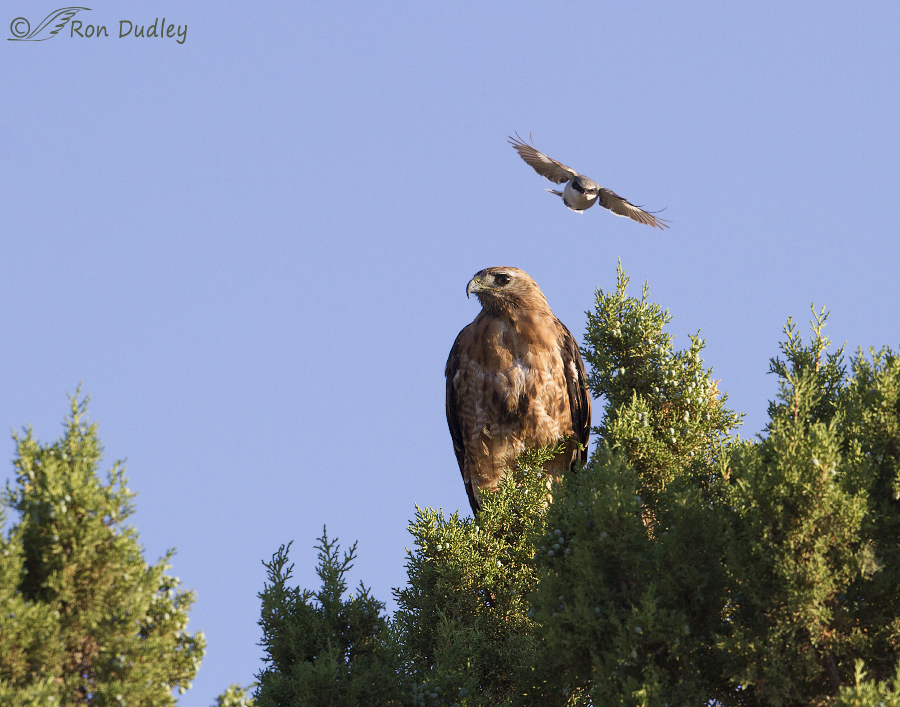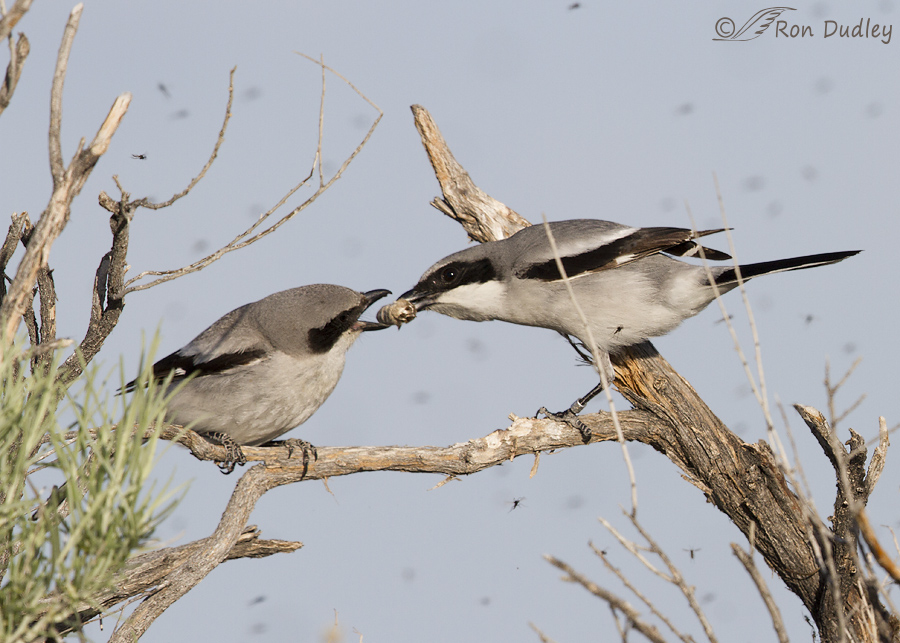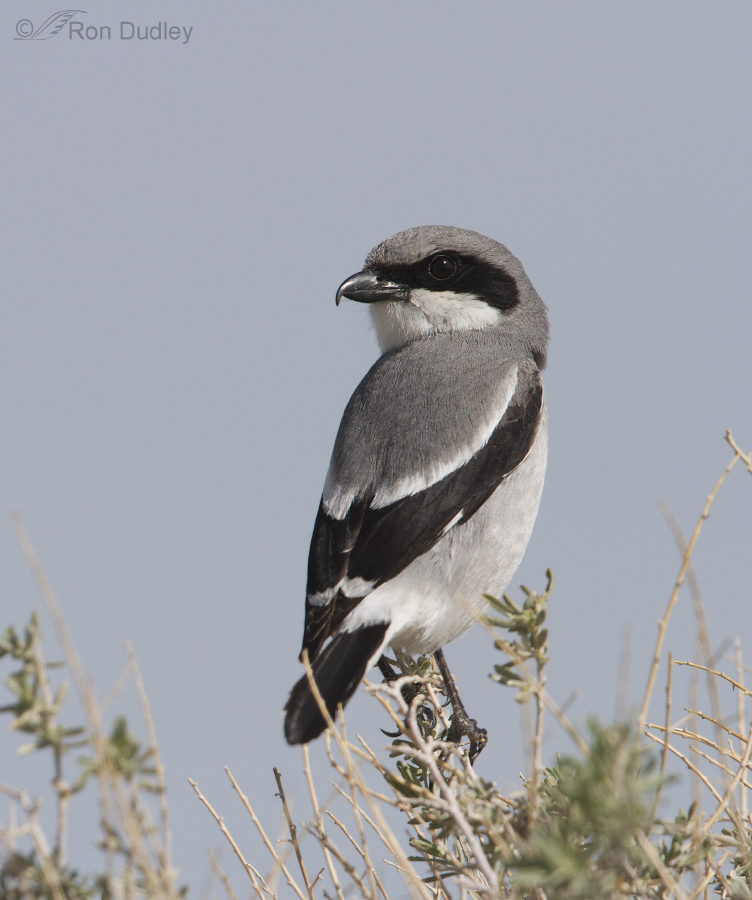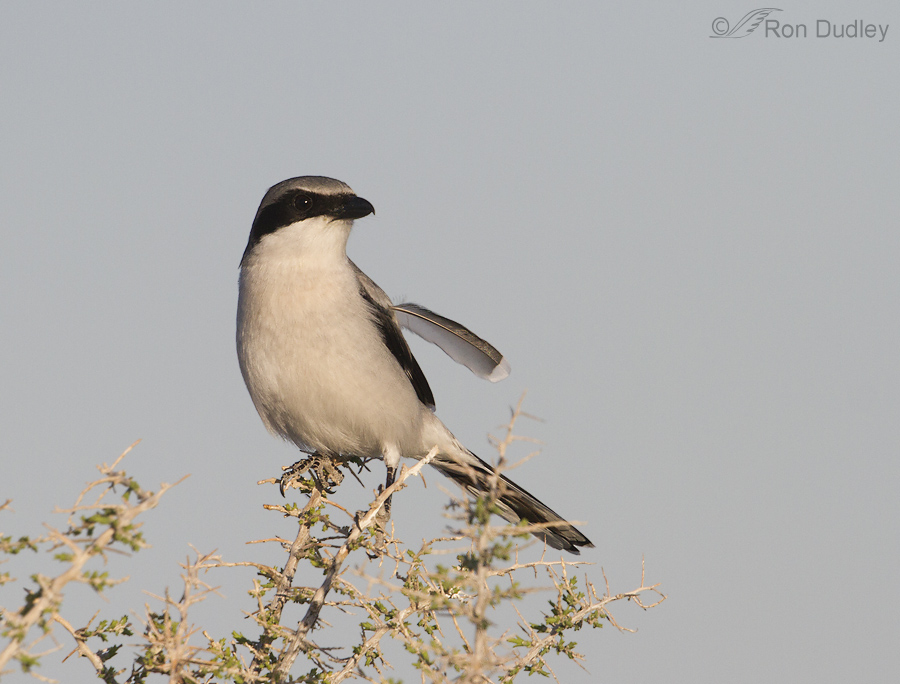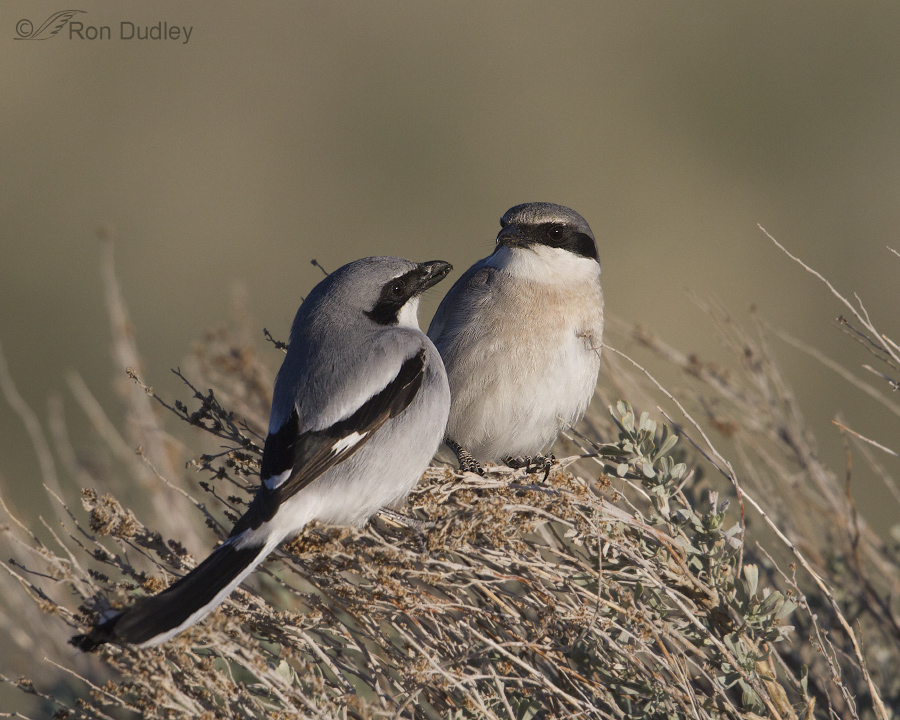Tag: lanius ludovicianus
Loggerhead Shrike Devouring An Impaled Vole
Shrike Take-off Against A Smoky Background (plus an Antelope Island raptor report)
Loggerhead Shrike In Two Interesting Poses
Loggerhead Shrike On Winter Rabbitbrush
Loggerhead Shrike In Full Flight
The Shrike And The Grasshopper (and noticing the “little things”)
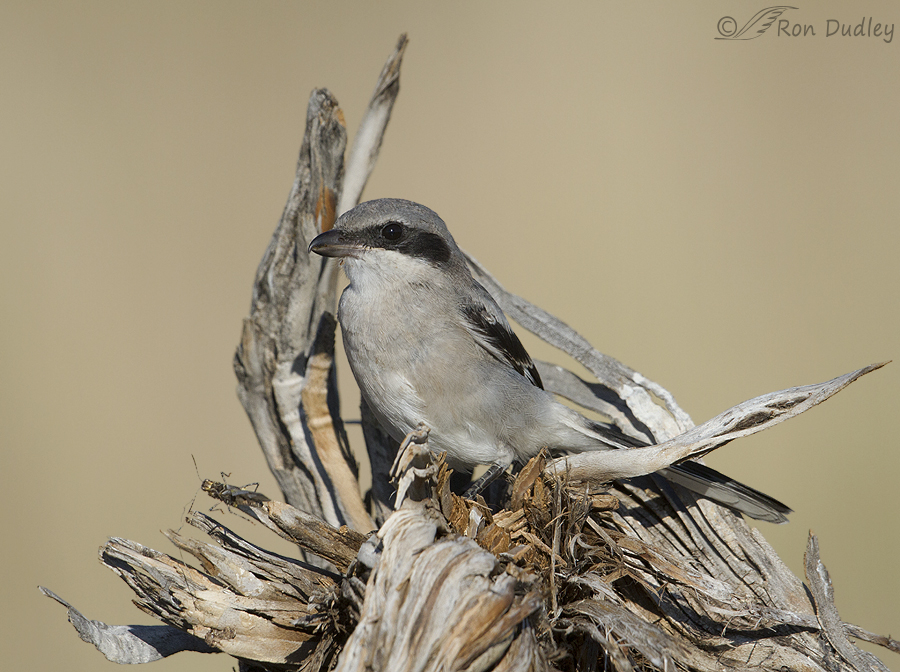
I make every effort in the field to “read” the behavior of my avian subjects. Sometimes I’m right and sometimes I’m not but either way it’s a learning experience for me and my percentage of accuracy does seem to be improving. One of the payoffs can be better bird photographs for a variety of reasons.
Shrike Sneak-attack On A Red-tailed Hawk
Loggerhead Shrikes “Mate Feeding”
Male Loggerhead Shrike Feeding His Mate
How The Loggerhead Shrike Got Its Name
A Twice-anomalous Loggerhead Shrike
A Mated Pair Of Loggerhead Shrikes
Birds “Wearing To Dark” – Some Visual Evidence As To Why
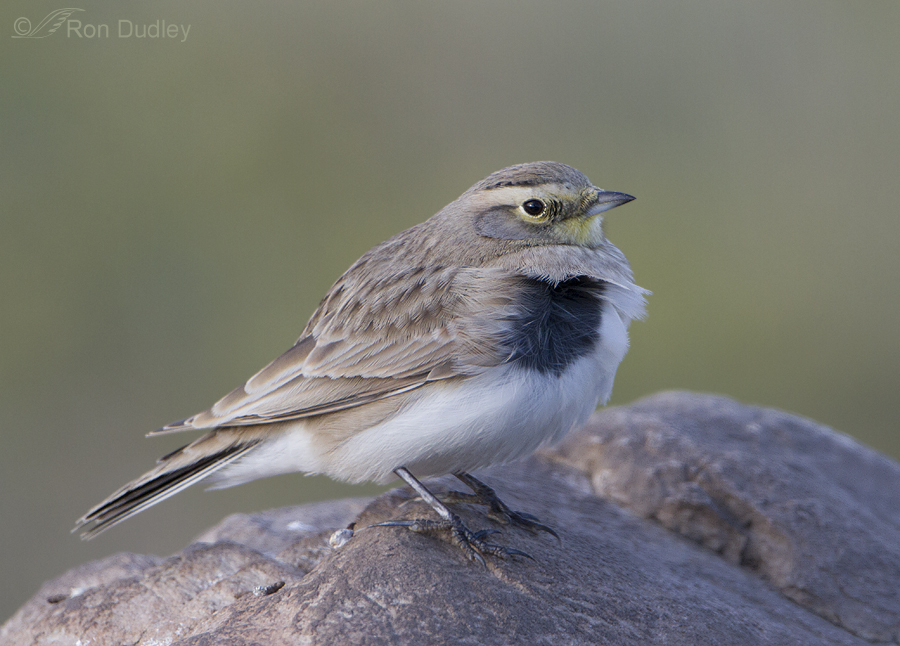
This past summer I posted these first two Loggerhead Shrike images as evidence that the ventral colors of the species change from white to almost black as the summer wears on and asked my readers why this occurs. Several responded with a logical explanation.
Three days ago I photographed a Horned Lark that may demonstrate that those readers were right.
Loggerhead Shrikes – A Color Change I Don’t Understand
I’m confused about a color change I’m seeing in Loggerhead Shrikes. 1600, f/7.1, ISO 640, 500 f/4, 1.4 tc, natural light, image taken 4/26/13 on Antelope Island For most of the year the adults I see have a white or pale ventral surface (belly, breast and sides) which is exactly as described in the field guides and other resources I have access to. 2500, f/6.3, ISO 640, 500 f/4, natural light, image taken 7/3/13 on Antelope Island But beginning in about early July there’s a fairly dramatic change that is not addressed in my field guides. That white plumage turns significantly darker and an almost black area on the upper breast appears. This is about the time they’re fledging chicks around here and when I first noticed this several years ago I wondered if the birds were simply becoming “dirty” as they scurried around trying to feed and care for those very demanding youngsters. But now I’m pretty sure that’s not the case. All of the adult Loggerhead Shrikes I see go through this change to some degree or another. 3200, f/5.6, ISO 640, 500 f/4, 1.4 tc, natural light, image taken 7/14/13 on Antelope Island Here’s another (pretty silly looking) example. This is also the time of year when these birds are molting so I wondered if I was somehow seeing black skin (some birds do have black skin) through very skimpy plumage that time of year and I was somehow mistaking it for black feathers. But as you can see in this preening, molting adult, their skin…


